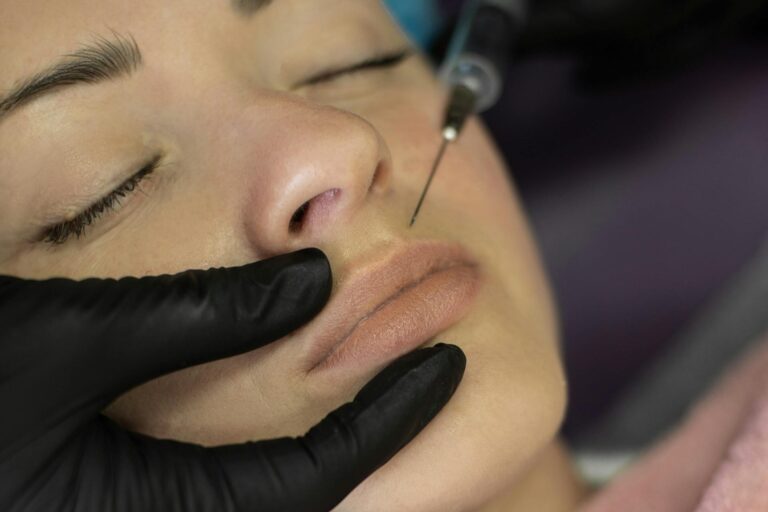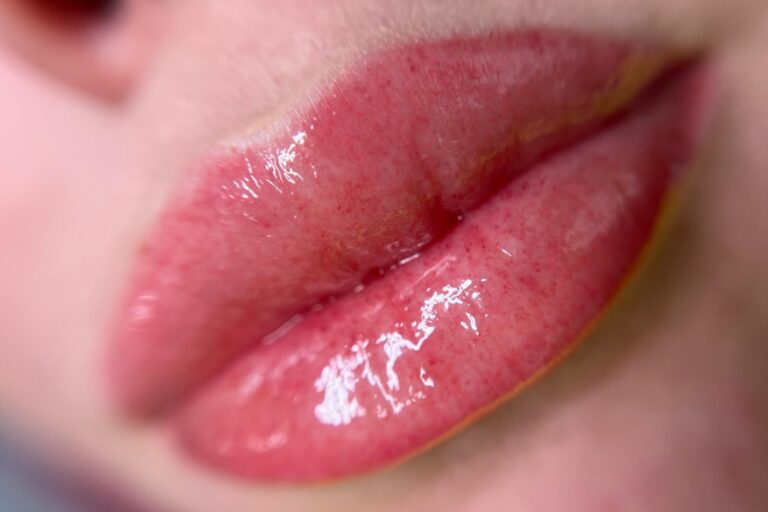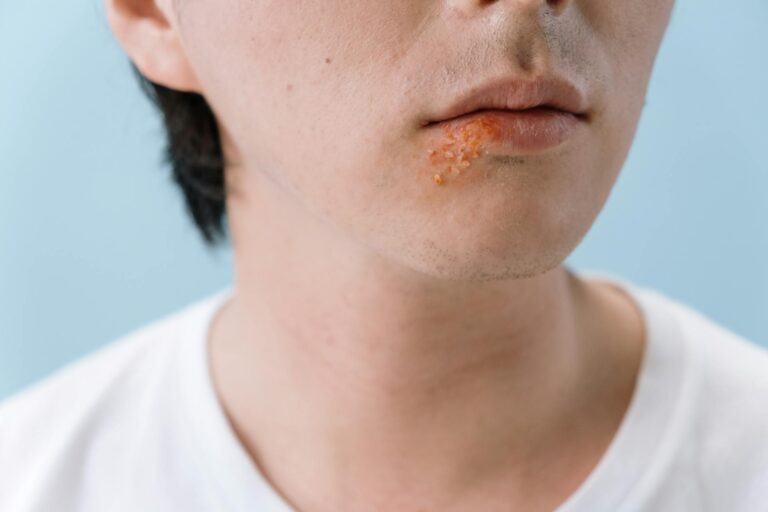
If you are considering enhancing your lips with fillers, this guide will provide you with all the information you need. One of the most common questions is, how long do lip fillers last? This guide also covers the different types available and what you can expect during and after the treatment.
You will find useful tips for maintaining your results, as well as a discussion on potential risks and side effects. Whether you are a first-time user or contemplating a touch-up, this article offers essential knowledge to help you make informed decisions.
What Are Lip Fillers?

Lip fillers have become a popular option in non-surgical enhancement, serving as cosmetic injectables that enhance lip volume and define the lip profile. They provide individuals with the opportunity to achieve their aesthetic goals.
These fillers primarily consist of hyaluronic acid, a naturally occurring substance in the body that helps maintain skin hydration and elasticity. As advancements in cosmetic procedures continue to develop, more patients are choosing lip augmentation to improve lip symmetry, contouring, and overall facial aesthetics. The cost of lip fillers in the UK is often a consideration for those exploring this option, as many weigh the value of this cosmetic enhancement against the long-term benefits it provides.
This trend has led to a growing number of highly satisfied clients within the beauty community.
How Long Do Lip Fillers Last?
The duration of lip fillers can differ depending on several factors. On average, most lip fillers last between six to twelve months following the initial injections.
Various elements can influence how long the effects last, including the specific product formulation, the technique used for injection, and individual characteristics of the patient, such as skin type and lifestyle choices.
It is important to understand the longevity of lip fillers, as this knowledge helps in setting realistic expectations for patients and planning future treatments accordingly.
Factors That Affect the Longevity of Lip Fillers
Several factors can greatly influence how long lip fillers last, including an individual’s skin type, lifestyle choices such as UV exposure and smoking, and the natural ageing process that affects skin elasticity and hydration. Additionally, the intervals between treatments and the specific filler product used are crucial in determining the duration of the results.
For those interested in everything to know about lip fillers, understanding the impact of factors like hydration, lifestyle habits, and filler quality is key to achieving long-lasting results. For example, individuals with drier skin may find their fillers diminish more quickly, as less natural moisture supports the product.
Adopting healthy lifestyle practices, such as applying sunscreen and avoiding smoking, is essential for preserving results over time. Experts often recommend scheduling follow-up treatments approximately every six months to effectively replenish the product, ensuring consistently satisfying results.
What Are the Different Types of Lip Fillers?

When contemplating lip augmentation, it is essential to understand the various types of lip fillers available to achieve your desired beauty goals.
Among the most commonly used fillers are hyaluronic acid fillers, known for their natural appearance and texture. Additionally, collagen fillers, which were among the first dermal fillers used in cosmetic procedures, remain a popular option.
Each type of lip filler possesses unique characteristics and benefits, along with potential aesthetic outcomes that can be tailored to meet individual patient needs.
Hyaluronic Acid Fillers
Hyaluronic acid fillers have become a popular choice for lip enhancement due to their remarkable ability to provide immediate volume, enhance lip definition, and maintain skin hydration. These fillers are biodegradable, making them an appealing option for individuals seeking non-surgical enhancements with minimal downtime.
One of the notable characteristics of these fillers is their unique ability to blend seamlessly with the natural tissues of the lips, resulting in a smooth and natural appearance that many people desire. Additionally, the reversible nature of hyaluronic acid offers individuals the option to adjust or dissolve the filler if they choose, providing reassurance and flexibility in their aesthetic decisions.
Brands such as Juvederm and Restylane are well-regarded in this field; they not only enhance the overall effectiveness of the treatments but also contribute to higher patient satisfaction by consistently delivering reliable results.
This integration with tissue, combined with the potential for reversal, positions hyaluronic acid fillers as a premier choice for those seeking safe and adaptable aesthetic solutions.
Collagen Fillers
Collagen fillers were among the earliest injectable options available for lip augmentation, renowned for their ability to provide excellent volume and a smooth texture. While their popularity has declined with the increasing use of hyaluronic acid fillers, they continue to offer unique results for those specifically interested in collagen enhancement.
These fillers function by replenishing the natural collagen in the skin, which promotes a youthful appearance and enhances overall facial contours. Patients typically appreciate the immediate results, with the most noticeable effects generally becoming apparent within a few weeks after the treatment.
It is crucial to consider both the effectiveness of the treatment and the safety of the patient, as some individuals may experience side effects such as swelling, bruising, or, in rare instances, allergic reactions. Being aware of the timeline for results and understanding the potential drawbacks can assist individuals in making informed decisions about this type of cosmetic enhancement.
Poly-L-Lactic Acid Fillers
Poly-L-Lactic Acid fillers are distinctive because they encourage collagen production over time, making them an excellent option for individuals seeking gradual and natural-looking lip augmentation. These fillers deliver long-lasting results and are frequently utilised in facial aesthetics to rejuvenate and enhance one’s overall appearance.
The way these treatments work involves the filler gradually integrating into the skin, which prompts the body to produce its own collagen. This process not only enhances volume and fullness but also contributes to a youthful glow, as it improves the skin’s firmness and elasticity.
Depending on individual circumstances, the effects of these fillers can last anywhere from six months to up to two years, allowing patients to experience extended rejuvenation.
Experts often suggest a series of sessions to optimise the results, providing a customised approach that aligns with each patient’s aesthetic goals and desired outcomes.
Calcium Hydroxylapatite Fillers
Calcium Hydroxylapatite fillers are recognised for their ability to provide substantial volume and contour to the lips, as well as improve skin texture. This makes them a popular choice for individuals looking to enhance their lip profile. These volumising agents tend to be thicker than other types of fillers, which results in a distinct aesthetic outcome.
Along with adding volume, the unique properties of Calcium Hydroxylapatite contribute to a natural appearance by stimulating collagen production over time. This bio-stimulatory effect not only helps ensure that the results last longer compared to traditional fillers, but it also promotes overall lip health.
Safety is an important factor to consider. While this filler is generally regarded as safe, potential risks such as bruising and swelling at the injection site can occur. Therefore, it is essential for individuals to discuss their treatment plan with a qualified practitioner who can evaluate their specific needs, ensuring effective results while minimising side effects.
What to Expect During and After Lip Filler Treatment?

It is important for patients seeking lip augmentation to understand what to expect during and after the lip filler treatment in order to achieve their beauty goals.
The process usually begins with a consultation with a licensed practitioner, followed by the actual lip filler injections, which typically take about 15 to 30 minutes.
Patients should also be well-informed about the recovery process, aftercare instructions, and how to effectively manage any potential side effects.
Preparation for Lip Filler Treatment
Preparing for lip filler treatment involves several important steps, beginning with a thorough consultation with a licensed practitioner. During this consultation, the practitioner will assess the patient’s lip anatomy, discuss the desired results, and establish realistic expectations.
It is also crucial to adhere to any recommended pre-treatment guidelines, such as avoiding certain medications and maintaining proper skin care.
During the consultation, the practitioner will evaluate the patient’s skin type and overall oral health, ensuring that any existing issues are addressed prior to the treatment. Patients can anticipate a comprehensive discussion about their desired outcomes, which allows for the creation of a tailored treatment plan to meet their individual needs.
Additionally, it is essential to understand the potential risks associated with lip fillers, including swelling and allergic reactions, which will be thoroughly covered.
To prepare effectively, patients should avoid consuming alcohol or participating in strenuous exercise for at least 24 hours before the appointment. This will help ensure the best possible results.
The Procedure
The lip filler procedure involves a precise technique where the chosen product is injected into specific areas of the lips to achieve the desired contour and volume. This process is generally conducted in a cosmetic clinic or dermatology practice, where a qualified injector prioritizes both patient comfort and safety to ensure optimal results.
Selecting a qualified professional is essential, as their expertise can greatly influence the aesthetic outcomes of the treatment. During the procedure, patients can anticipate that the area will be numbed beforehand, often with a topical anaesthetic, to enhance comfort. The practitioner will employ advanced injection techniques tailored to each individual’s facial anatomy, ensuring results that look natural.
Throughout the process, safety remains a top priority, with the use of high-quality, MHRA-approved products aimed at minimising risks and maximising overall satisfaction. After the treatment, patients might experience mild swelling or bruising, but these effects typically subside quickly, revealing fuller, beautifully shaped lips that align perfectly with their aesthetic goals.
Recovery and Aftercare
After undergoing lip filler treatment, patients can generally expect to experience some swelling and bruising. These are normal side effects that typically resolve within a few days.
Proper aftercare is crucial for minimising discomfort and achieving the best possible results, so it is important for patients to understand how to care for their lips in the days following the procedure.
During this important recovery period, it is recommended that individuals refrain from engaging in strenuous activities and excessive sun exposure, as both can worsen swelling. Keeping the head elevated and applying cold compresses can effectively alleviate discomfort while also helping to reduce inflammation.
Patients may also want to consider scheduling touch-up treatments if they desire further enhancement or feel that adjustments are needed.
Importantly, the reversibility of fillers offers reassurance for those who may be hesitant about long-term commitments. Additionally, referring to patient reviews can provide valuable insights, helping prospective clients set realistic expectations and navigate their recovery journeys with greater confidence.
How to Maintain Lip Filler Results?

Maintaining the results of lip fillers requires a thoughtful approach that includes regular follow-up treatments along with healthy lifestyle habits to extend the aesthetic benefits of lip enhancement.
It is advisable for patients to schedule touch-up appointments according to the specific longevity of their fillers and their personal beauty goals. This proactive strategy can help ensure continued satisfaction with their results.
Follow-up Treatments
Follow-up treatments are crucial for maintaining the effects of lip fillers, allowing patients to continue enjoying their enhanced lip volume and definition. Depending on the specific type of lip filler used and individual metabolic rates, it is important for patients to discuss suitable treatment intervals with their licensed injector to meet their aesthetic goals.
Establishing a follow-up schedule is not only vital for prolonging the benefits of the treatment but also for improving patient satisfaction. Different fillers possess varying longevity and characteristics, which can greatly affect how often follow-up appointments are necessary. For example, hyaluronic acid-based fillers may require touch-ups more frequently than semi-permanent options.
Experts suggest customising the follow-up timeframe based on the type of filler, individual objectives, and how a patient’s body metabolises the product. This personalised approach ensures optimal treatment effectiveness and helps patients feel confident in their appearance.
Healthy Lifestyle Habits
Adopting healthy lifestyle habits is crucial for anyone seeking to maintain their lip filler results and improve overall skin health. Important aspects include staying hydrated, protecting the lips from UV exposure, and adhering to a consistent skincare routine to combat the ageing process.
Along with these foundational practices, incorporating nutrient-rich foods into one’s diet can greatly enhance skin vitality and resilience. Foods high in antioxidants, such as berries, nuts, and leafy greens, play a significant role in combating oxidative stress, which can lead to premature ageing.
Utilising moisturisers designed for specific skin types is also beneficial, as they provide the necessary hydration and protection for both skin and lips. Gentle exfoliation, combined with hydrating serums, can further improve the skin’s texture, creating a more youthful and radiant appearance.
Furthermore, prioritising oral health is equally important, as it contributes to one’s overall appearance. Regular dental care can complement beauty goals by ensuring a bright smile that draws attention to healthy, plump lips.
What Are the Potential Risks and Side Effects of Lip Fillers?

While lip fillers are typically safe and well-tolerated, it is essential for patients to understand the potential risks and side effects that may accompany these cosmetic procedures.
Common side effects often include swelling, bruising, and redness at the injection site. However, in rare cases, complications such as allergic reactions or filler migration can occur, leading to outcomes often referred to as lip fillers gone wrong. Being informed about these risks and choosing a qualified practitioner can significantly reduce the likelihood of such issues and ensure a safer, more satisfying experience.
Frequently Asked Questions
How long do lip fillers last?
Lip fillers typically last between 6-12 months. The exact duration may vary depending on the individual’s metabolism, the type of filler used, and the amount injected.
What are lip fillers made of?
Lip fillers are made of hyaluronic acid, a naturally occurring substance in the body that helps to add volume and hydration to the lips. This makes it a safe and effective option for lip enhancement.
Are lip fillers permanent?
No, lip fillers are not permanent. They are temporary and will gradually break down and be absorbed by the body over time. This allows for adjustments to be made or for the effects to wear off if desired.
Do lip fillers hurt?
The process of getting lip fillers can cause some discomfort, but most providers use a numbing cream or ice to minimise any pain. The filler itself also contains lidocaine, a numbing agent, to further reduce discomfort.
How long is the recovery time for lip fillers?
The recovery time for lip fillers is minimal. There may be some swelling and bruising immediately after the procedure, but this typically subsides within a few days. It is recommended to avoid strenuous exercise and hot temperatures for 24 hours after the injection.
Can I get my lip fillers dissolved?
Yes, if you are unhappy with the results of your lip fillers or if you experience any complications, the filler can be dissolved using an enzyme called hyaluronidase. This typically takes effect within 24-48 hours.






